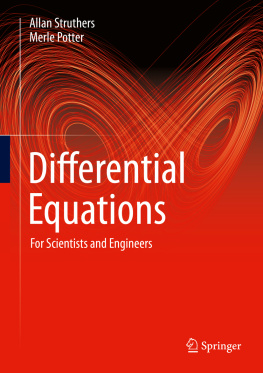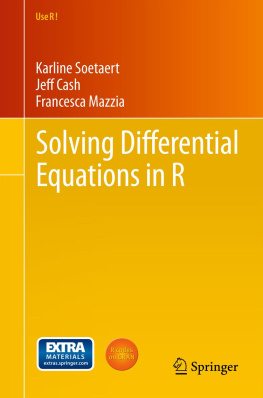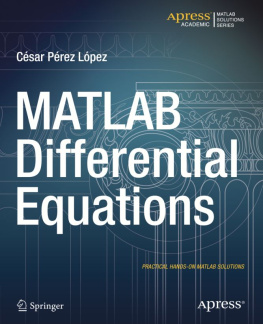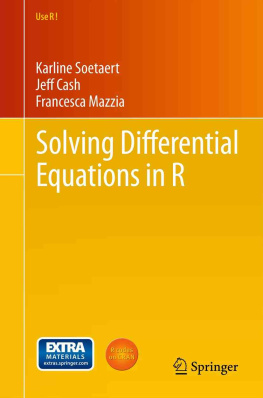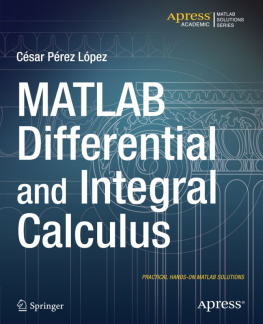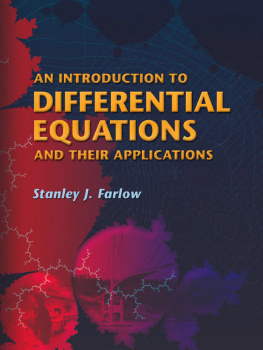Lopez C.P. - Integral Calculus and Differential Equations using Mathematica
Here you can read online Lopez C.P. - Integral Calculus and Differential Equations using Mathematica full text of the book (entire story) in english for free. Download pdf and epub, get meaning, cover and reviews about this ebook. genre: Science. Description of the work, (preface) as well as reviews are available. Best literature library LitArk.com created for fans of good reading and offers a wide selection of genres:
Romance novel
Science fiction
Adventure
Detective
Science
History
Home and family
Prose
Art
Politics
Computer
Non-fiction
Religion
Business
Children
Humor
Choose a favorite category and find really read worthwhile books. Enjoy immersion in the world of imagination, feel the emotions of the characters or learn something new for yourself, make an fascinating discovery.

Integral Calculus and Differential Equations using Mathematica: summary, description and annotation
We offer to read an annotation, description, summary or preface (depends on what the author of the book "Integral Calculus and Differential Equations using Mathematica" wrote himself). If you haven't found the necessary information about the book — write in the comments, we will try to find it.
Calculation Numeric With Mathematica
Symbolic Calculation With Mathematica
Graphics With Mathematica
Mathematica And The Programming
Integration And Applications
Indefinite Integrals
Integration By Substitution (Or Change Of Variables)
Integration By Parts
Integration By Reduction And Cyclic Integration
Definite Integrals. Curve Arc Length, Areas, Volumes And Surfaces Of Revolution. Improper Integrals
Definite Integrals
Curve Arc Length
The Area Enclosed Between Curves
Surfaces Of Revolution
Volumes Of Revolution
Curvilinear Integrals
Improper Integrals
Parameter Dependent Integrals
The Riemann Integral
Integration In Several Variables And Applications. Areas And Volumes. Divergence, Stokes And Greens Theorems
Areas And Double Integrals
Surface Area By Double Integration
Volume Calculation By Double Integrals
Volume Calculation And Triple Integrals
Greens Theorem
The Divergence Theorem
Stokes Theorem
First Order Differential Equations. Separates Variables, Exact Equations, Linear And Homogeneous Equations. Numeriacal Methods
Separation Of Variables
Homogeneous Differential Equations
Exact Differential Equations
Linear Differential Equations
Numerical Solutions To Differential Equations Of The First Order
High-Order Differential Equations And Systems Of Differential Equations
Ordinary High-Order Equations
Higher-Order Linear Homogeneous Equations With Constant Coefficients
Non-Homogeneous Equations With Constant Coefficients. Variation Of Parameters
Non-Homogeneous Linear Equations With Variable Coefficients. Cauchy-Euler Equations 6
The Laplace Transform
Systems Of Linear Homogeneous Equations With Constant Coefficients
Systems Of Linear Non-Homogeneous Equations With Constant Coefficients
Higher Orden Differential Equations And Systems Using Approximation Methods. Differential Equations In Partial Derivatives
Higher Order Equations And Approximation Methods
The Euler Method
The RungeKutta Method
Differential Equations Systems By Approximate Methods
Differential Equations In Partial Derivatives
Orthogonal Polynomials
Airy And Bessel Functions
Lopez C.P.: author's other books
Who wrote Integral Calculus and Differential Equations using Mathematica? Find out the surname, the name of the author of the book and a list of all author's works by series.

